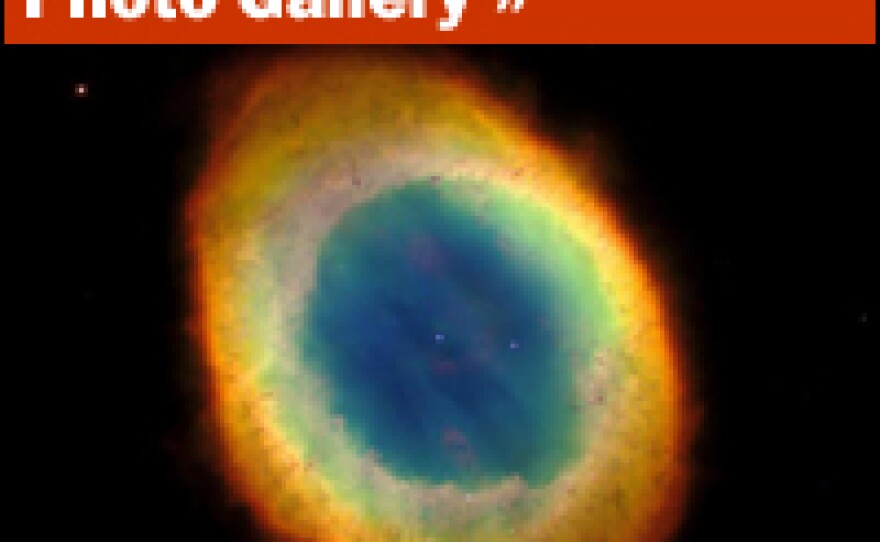
Spacewalking astronauts successfully replaced the Hubble Space Telescope's main camera, which has taken many of the telescope's most famous images, after wrestling with a stubborn bolt that refused to turn.
The camera was installed back in 1993 and didn't seem to want to come out. Mission Control told spacewalker Andrew Feustel to go ahead and use some elbow grease to try and force the bolt free, even if that meant he might break it.
After all, if the bolt wouldn't cooperate, astronauts wouldn't be able to swap out Hubble's old camera and install a more powerful version, a chore that's one of the top priorities of this 11-day, high-flying repair mission, 350 miles above Earth.
"OK, here we go," said Feustel, as he worked on the bolt. After a moment of suspense, he announced, "I think I got it."
Later, he slid out the old camera, which is as big as a baby grand piano, and worked with fellow spacewalker John Grunsfeld to install the new one.
The first images taken with the new camera are expected to be unveiled in late summer.
The old camera will come home on space shuttle Atlantis, and the Smithsonian's National Air and Space Museum has expressed an interest in displaying it. That's because the camera famously helped to save Hubble, after problems with the telescope's primary mirror were discovered in 1990. Engineers on the ground modified this spare camera so that its optics would compensate for the telescope's flaws, and when it was installed, Hubble went from being a national disgrace to a triumph in space.
During their spacewalk, Feustel and Grunsfeld also swapped out the telescope's data handling unit, which processes science data so it can be sent to the ground. Part of that computer failed just weeks before space shuttle Atlantis was originally scheduled to blast off last fall, and NASA delayed the mission so engineers could prepare a replacement.
Grunsfeld also installed a ring-like mechanism onto the telescope that will allow a future spacecraft to latch on to Hubble at the end of its life and pull it out of orbit so that it will fall toward the Pacific Ocean.
Working on Hubble as it rested in Atlantis' open payload bay was nothing new for Grunsfeld, who has been a Hubble repairman on two previous shuttle missions. Still, he seemed elated when he first opened the hatch and floated outside for the mission's full spacewalk.
"This is fantastic," exclaimed Grunsfeld as he exited the hatch in his bulky spacesuit, telling Feustel, a first-time spacewalker, "You're going to love it, Drew."
Scientists on the ground have been equally enthusiastic. When Atlantis made its first close approach to Hubble on Wednesday and beamed television images of the bus-sized telescope back down, "there were audible gasps of elation," said Jon Morse, head of NASA's astrophysics division, who was in a control room with other scientists who have worked on the Hubble program.
"This was truly a wonderful sight, after seven years or so since the last servicing mission, to see the space telescope," said Morse.
Astronauts have four more spacewalks to go. Later in the mission, they'll attempt some tricky repairs that require undoing dozens of screws and opening up two instruments that were never designed to be fixed in space.
NASA hopes that this final servicing mission will keep the venerable telescope going until at least 2014. After that, there will be no more repairs, as NASA will turn its attention to building newer space telescopes.
Copyright 2022 NPR. To see more, visit https://www.npr.org. 9(MDAzMjM2NDYzMDEyMzc1Njk5NjAxNzY3OQ001))







